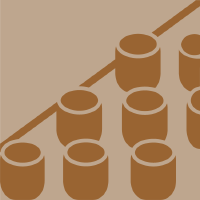Topic Editors


Surface Science of Materials
Topic Information
Dear Colleagues,
Surface science is one of the most significant materials research areas. Numerous studies are still being conducted all over the world. The performance and functionality of materials are significantly influenced by their surfaces and interfaces. These nanoscale regions, often just a few atomic layers thick, govern a material's reactivity, wettability, adhesion, electronic properties, and catalytic activity, substantially impacting their applications across numerous fields.
This Topic aims to provide a comprehensive overview of the latest advancements and future directions in this crucial area, including but not limited to the following key areas:
- Surface characterization techniques: advanced microscopy (AFM, STM, TEM, etc.), spectroscopy (XPS, UPS, Auger, etc.), and other analytical methods for surface analysis.
- Surface modification and engineering: techniques for controlling surface composition, structure, and properties (e.g., deposition, etching, and functionalization).
- Surface reactions and catalysis: studies on heterogeneous catalysis, surface-mediated reactions, and the design of novel catalysts.
- Surface-related phenomena: adsorption, desorption, diffusion, wetting, friction, corrosion, and other surface-dependent processes.
- Nanomaterials and surfaces: the unique surface properties of nanomaterials and their applications in various fields.
- Biointerfaces and biomaterials: the interaction between materials and biological systems at the interface.
- 2D materials and surfaces: focus on the unique properties of 2D materials and their surface modification for specific applications.
This Topic aims to provide a comprehensive overview of the current state of the art in the surface science of materials. It is intended to serve as a valuable resource for researchers, students, and professionals across various disciplines, stimulating further research and facilitating cross-disciplinary collaborations to fully harness the potential of materials science through a deeper understanding of their surfaces.
We welcome submissions demonstrating significant progress in fundamental understanding and technological applications within this vital field.
Dr. Satoshi Komasa
Dr. Akina Tani
Prof. Dr. Yoshiya Hashimoto
Dr. Hideaki Sato
Topic Editors
Keywords
- surface science
- catalysis
- nanomaterials
- 2D materials
- thin films
- surface characterization and modification
- biomaterials
- energy materials
- electronic materials
- computational modeling
Participating Journals
| Journal Name | Impact Factor | CiteScore | Launched Year | First Decision (median) | APC | |
|---|---|---|---|---|---|---|

Bioengineering
|
3.7 | 5.3 | 2014 | 19.2 Days | CHF 2700 | Submit |

International Journal of Molecular Sciences
|
4.9 | 9.0 | 2000 | 20.5 Days | CHF 2900 | Submit |

Materials
|
3.2 | 6.4 | 2008 | 15.2 Days | CHF 2600 | Submit |

Surfaces
|
2.9 | 3.4 | 2018 | 17.3 Days | CHF 1600 | Submit |

Lubricants
|
2.9 | 4.5 | 2013 | 14.8 Days | CHF 2600 | Submit |

Nanomaterials
|
4.3 | 9.2 | 2010 | 15.4 Days | CHF 2400 | Submit |

Preprints.org is a multidisciplinary platform offering a preprint service designed to facilitate the early sharing of your research. It supports and empowers your research journey from the very beginning.
MDPI Topics is collaborating with Preprints.org and has established a direct connection between MDPI journals and the platform. Authors are encouraged to take advantage of this opportunity by posting their preprints at Preprints.org prior to publication:
- Share your research immediately: disseminate your ideas prior to publication and establish priority for your work.
- Safeguard your intellectual contribution: Protect your ideas with a time-stamped preprint that serves as proof of your research timeline.
- Boost visibility and impact: Increase the reach and influence of your research by making it accessible to a global audience.
- Gain early feedback: Receive valuable input and insights from peers before submitting to a journal.
- Ensure broad indexing: Web of Science (Preprint Citation Index), Google Scholar, Crossref, SHARE, PrePubMed, Scilit and Europe PMC.

